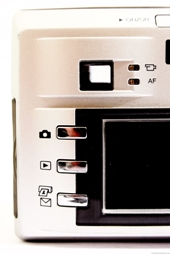I purchased my first digital camera in 2002, and it included two very different image formats: a Raw and JPEG format. Back then I didn’t know much about the Raw format, but quickly learned what it was, and soon began using the Raw format instead of the JPEG format.
Much like the camera I had back then, many digital cameras include the option of choosing between the two formats. There is a great debate about which format is better, and why you should choose one over the other. In this post I will add my two cents to the debate and allow you to choose.
The Digital Formats
I have discussed the Raw and JPEG formats in various posts in the past. A post titled What is a Digital Raw File? provides a brief overview of that format, while I talk about the JPEG format in the post Overview of Various Image File Formats. There are many differences between the two formats, which will help you to choose which format to use.

The JPEG format is the most popular format that is currently supported by every digital photo camera. It is also the standard photo format online, and has been around for many years. All photo and image editors provide support for the JPEG format.
The JPEG format is compressed, so each file is very small, especially compared to other formats such as TIFF. To create such as small file, some information is lost during the compression. At a low compression (larger file), there is some data loss, but not enough where you really notice a difference. At a higher compression, the data loss and quality of the image begin to be seen.
The Raw format is not supported by all cameras. This format can be found in the digital SLRs (DSLRs) and some point-and-shoot cameras. This is a proprietary format that requires special software to open the Raw file, which also means you can’t simply send someone a file and have them view the photo. Raw files are simply the raw data returned by the camera sensor without any processing by the digital camera.
Unlike JPEGs, Raw files may or may not be compressed. This makes them much larger than a JPEG file. The upside to such a larger file is that they don’t have any loss of data when they are saved to the memory card, and usually contain 10-,12-, or 14-bits of data. This provides much more headroom for editing.
Now from the quick descriptions above, you may not be able to choose a file format to use. Let me help you with this choice.
Which to Choose?
The choice between the two formats can be made, if you determine what you would like to do with your photos.
You should choose the Raw format if you agree with the following statements:
- I like to have total editing control of my photos, such as the colour, sharpening, and contrast.
- I have a lot of storage space, so file size isn’t an issue for me.
- I want the best quality photo from my camera.
- I have no issue with the format being proprietary, as long as future applications support the format from my camera.
You should choose JPEGs if you agree with the following statements:
- I’m not interested in editing my photos.
- I don’t want to worry about format compatibility, such as when sending a photo in an e-mail, or uploading an image.
- I like to print my photos directly from my memory card.
- I don’t have a large amount of storage, so I don’t like large digital photo files.
For the average person that takes photos with a digital camera, you should choose JPEGs. For those that like to have total control over the look of their image, Raw may suit their needs better.
For me, I choose both as my camera, the Rebel Xsi, has the option to save both a Raw file and JPEG of each photo. This increases the amount of storage space, however, I now get the best of both worlds.
Whichever format you choose, just remember that the choice is yours.